Raritan River Pathogens Trackdown Collaborative Meeting: LRWP, Rutgers Cooperative Extension, EPA, IEC, NY/NJ-HEP, NJDEP
See below for notes from the Collaborative’s September 26, 2022 meeting regarding pathogens in the Raritan River.
See below for notes from the Collaborative’s September 26, 2022 meeting regarding pathogens in the Raritan River.
Article and photos by Joe Mish

The stone plaque set in the fieldstone bridge over Cat Tail Brook is crudely chiseled with the date 1825 along with the name of the mason and men who directed its construction.
The graves of the early settlers preserved in a small patch of land are marked with red shale stones, some with hand carved epitaph’s, other small, weathered stones barely decipherable, some messages completely eroded.
A block of shale rests in the river with the inscription J N Stout along with the Roman numeral XVI. Well into the twentieth century, property lines were represented by rocks or trees with slash marks.
The need to communicate is an innate human behavior, messages scribed on whatever canvas is available, whether it be scribbled on a napkin, roadside billboard, or graffiti on the side of a building. From the Chauvet Pont d’ arc caves of France and their well-preserved pictographs, to the Parsippany petroglyphs in north Jersey, each generation of humans, worldwide, expressed themselves in the most rudimentary ways, using whatever medium was on hand.
My interest is in the paleo or pre-colonial people who lived in our area whose rationale for leaving signs and messages is no different than those seen today. Messages that were the precursor of books, told stories of the hunt or other rituals in pictographs, dendroglyphs and petroglyphs. Pictographs are paintings placed in a protected area, dendroglyphs were images carved into a tree who bark had been partially stripped, petroglyphs were figures carved or etched into stone, usually in the open for travelers to see.
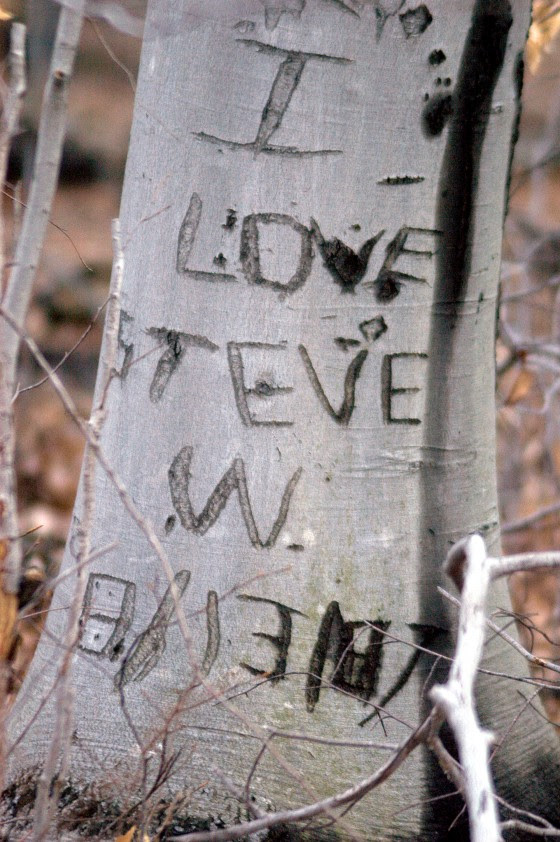
In the book, “Rock Art of Eastern North America”, the author notes the scarcity of primitive art in the eastern woodlands versus the numerous examples in the western states, primarily due to climate. As trees were the dominant canvasses of the woodlands, trees carved with dendroglyphs are not likely to be found. The rock strewn Sourland mountains would be a prime location for glyphs, while in the glacial scoured highlands of northern NJ, petroglyphs been authenticated.
An example noted in the book explains dendroglyphs were located on well-travelled trails, river crossings and prominences. The topography of the land was also a factor as it restricted or directed travel around obstacles, along rivers or mountain trails. Humans as well as wildlife seek out paths of least resistance as well as places which provide a view. What traveler has not succumbed to the temptation to climb a huge boulder alongside a hiking trail? In paleo times that rock was a safe place to camp, seek refuge from a wolf, or ambush a deer. Some successful hunter might leave a mark to commemorate his luck.
Without having read or heard of such a ritual, I would leave a coin where a deer fell to my arrow. I don’t know why I did that; no one will ever find that coin. Maybe a lingering primal behavior acted out to ensure my clan’s survival by telling another hunter, that the location was a good place to hunt.
The South and North branch and Raritan rivers are prime places to look for petroglyphs on the shale cliffs. You are not likely to discover one, but certainly these would be the places to look. Indian artifacts abound and stories of local collectors are many. The cliffs protruding from the flood plain attracted passersby to the precipice, to see what they might see. We can only imagine a glyph carved into a nearby tree by the Unami clan, represented by the image of a turtle. Perhaps it marked territory, a place to camp or images of a turtle holding a tomahawk to signify a war party, as mentioned in the Rock Art book. Chance of finding artifacts at these outcroppings are greater than finding stone carvings.
Knowing that our rivers were the highways of pre-colonial times, I cannot resist re-examining one particular, smooth red shale cliff, for the remains of an eroded petroglyph. That rare, smooth red shale canvas must have served as a primitive billboard with images of fish and deer taken by the Unami clan. I can’t find a sign, but I keep on looking at that cliff as if the imagined carvings were somehow transcribed to mental images perceived only by kindred spirits who traveled the same watery path.
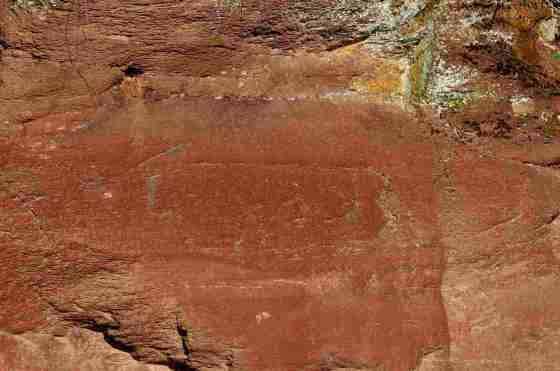
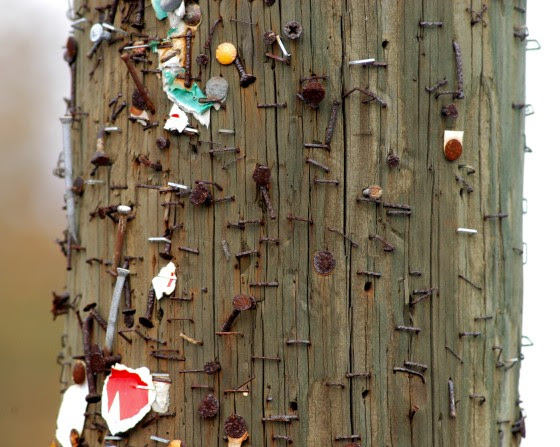
Author Joe Mish has been running wild in New Jersey since childhood when he found ways to escape his mother’s watchful eyes. He continues to trek the swamps, rivers and thickets seeking to share, with the residents and visitors, all of the state’s natural beauty hidden within full view. To read more of his writing and view more of his gorgeous photographs visit Winter Bear Rising, his wordpress blog. Joe’s series “Nature on the Raritan, Hidden in Plain View” runs monthly as part of the LRWP “Voices of the Watershed” series. Writing and photos used with permission from the author. Contact jjmish57@msn.com.
By LRWP Board President Heather Fenyk, Ph.D., AICP/PP
Today, October 18, 2022, marks the 50th anniversary of the Clean Water Act (CWA). To be sure, we owe a debt of gratitude to the shapers of the 1972 CWA for creating a law that significantly stemmed the flow of noxious point source pollutants into the nation’s waters. While we celebrate the successes of this seminal legislation, it is important to acknowledge the still unmet mandate of the CWA to bring about drinkable, fishable, swimmable waters. Water pollution remains a profound problem, with more than forty-seven thousand US waters still impaired. This includes every single stream, brook and river in the Lower Raritan Watershed. The major source of pollution into waters US and globally? Non-point source runoff from farm fields and the hardscape surfaces of our developed landscapes.
The LRWP believes we must chart a new path to meet drinkable, fishable, swimmable goals in the next 50 years:
In terms of strategy, centering the health of watersheds in environmental policymaking is key to realizing healthy waters.
This strategy must include integrated watershed management approaches that: 1) minimize impacts of land uses and development on waterways (good stormwater management is a start, however it does not go far enough as preventive practice); 2) require wastewater and stormwater be managed as assets; and 3) center the hydrologic cycle and aquatic systems in maintaining and restoring habitat connectivity.
The LRWP knows it is not our waterways that need to be cleaned so much as we must fix our lands to reduce polluted runoff into our waters. We see this in our water quality data: samples captured during drought weeks show lower pathogens than samples captured during wet day monitoring. And what happens after days of consistent downpours, as during the first week of October? Pathogen counts on our final monitoring session for 2022 on October 6 were the worst of the season. The LRWP invites you to join us to see first hand these connections between land use, engineered hydrologic flows, and water quality during our October 30th field session “Introduction to Urban Stream Health.” Watershed-themed costumes welcome!
On October 22 the LRWP will host a clean-up of the South River floodplain to recognize the 10th anniversary of SuperStorm Sandy. Reflecting on the impact of this storm we recall the catastrophic failure of Middlesex County Utilities Authority’s centralized sewage treatment facility. Sandy-related failure of the MCUA facility resulted in direct point source discharge of hundreds of millions of raw, untreated sewage into our waters. Observing how MCUA continues to discharge treated sanitary sewage into the Raritan River gives us pause. A holistic watershed management approach views wastewater as an asset, with water reclamation and reuse closing the loop between water supply and wastewater disposal. Setting an agenda for clean water for the next 50 years we must prioritize these better ways to clean up our waterways while meeting other sustainability goals.
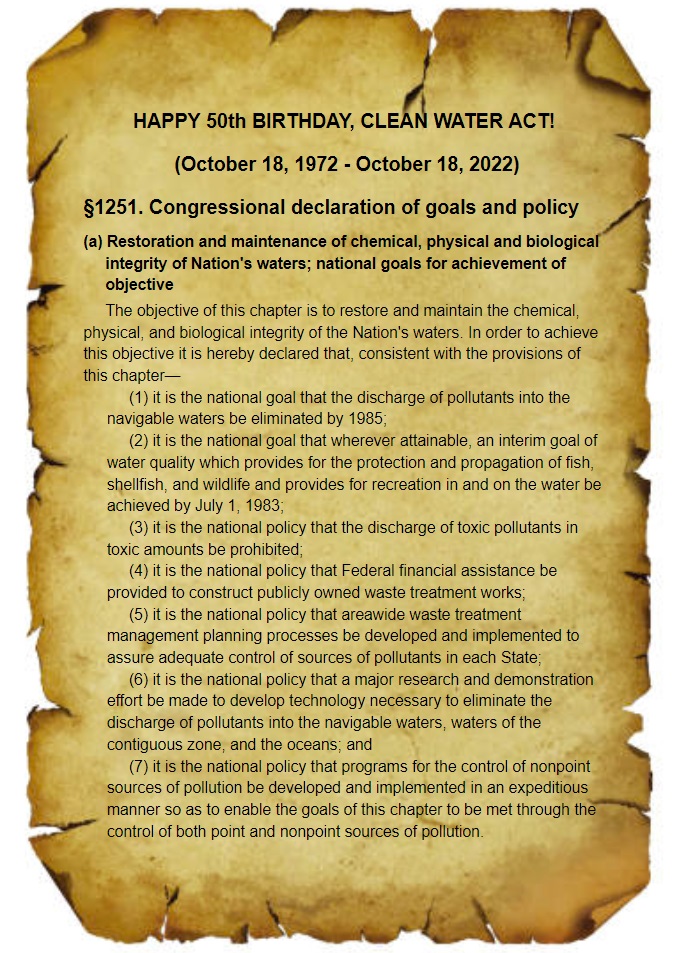
By LRWP Monitoring Outreach Coordinator Jocelyn Palomino
The Lower Raritan Watershed Partnership and Rutgers Cooperative Extension of Middlesex County run a volunteer pathogens monitoring program from May to September every Summer. On Thursdays we collect water quality samples at six (6) non-bathing public access beach sites along the Raritan River, provide our samples to the Interstate Environmental Commission for analysis in their laboratory, and report the results to the public on Friday afternoons. Our goal in reporting these results is to give area residents an understanding of potential health risks related to primary contact (touching) the water during water based recreation.
Our lab results for our final water quality sampling session of the season on October 6, 2022 indicate Enterococcus bacteria levels exceeding the EPA federal water quality standard of 104 cfu/100mL at ALL of our Lower Raritan sites. This is not surprising given the abundance of rainfall earlier in the week. We received as much as 4.5 inches of rain in some parts of the watershed from October 1-5. We know that the more rain that falls on the land, washing waste off impervious surfaces and into the waters, the higher the Enterococci pathogens counts in our water quality samples. And at our Perth Amboy Combined Sewer Overflow (CSO) site we observed point source sanitary waste flows directly into the River, with abundant pulverized toilet paper floating in the water.
Our problem sites for October 6, indicated by red frowns on the map and chart, include: Riverside Park (Piscataway), Rutgers Boathouse (New Brunswick), Edison Boat Ramp and Ken Buchanan Waterfront Park (Edison), South Amboy Waterfront Park (South Amboy), and 2nd Street Park (Perth Amboy).
Pathogens/Enterococci levels are used as indicators of the possible presence of disease-causing bacteria in recreational waters. Possible sources of bacteria include Combined Sewer Overflows (CSOs), improperly functioning wastewater treatment plants, stormwater runoff, leaking septic systems, animal carcasses, and runoff from manure storage areas. Such pathogens may pose health risks to people fishing and swimming in a water body. If you choose to recreate on the Raritan, please do so safely and be sure to wash thoroughly after all activities!
That’s a wrap for our Summer 2022 Pathogens Monitoring Program! Special thanks to our partners Michele Bakacs at Rutgers Cooperative Extension, Samantha Wilder and Evelyn Powers the Interstate Environmental Commission, and Nicole Fahrenfeld, Cristian Sanlatte, and Genevieve Ehasz with the Fahrenfeld Lab at Rutgers University. And extra special thanks to our amazing team of volunteers: Andrew Gehman, Frank Dahl, Julisa Collado, and Doreen Camardi.
A great picture of the team at the Rutgers Boat Dock during our last monitoring run this season.
Pictured left to right: Heather Fenyk, Jocelyn Palomino, Julisa Collado and Frank Dahl.
Photo Credit: Andrew Gehman
Andrew Gehman observes birds flying by at our Edison Site, Photo Credits: Jocelyn Palomino
While we were sampling at the Ken Buchanan Waterfront Park, we shared the dock with a local man who had just caught a 27-inch striped bass, Photo Credits: Jocelyn Palomino
With an active discharge coming from the CSO at Perth Amboy’s 2nd St. Park, the water was filled with pulverized toilet paper along with an overwhelming odor after the heavy rainfall from the week, Photo Credits: Jocelyn Palomino
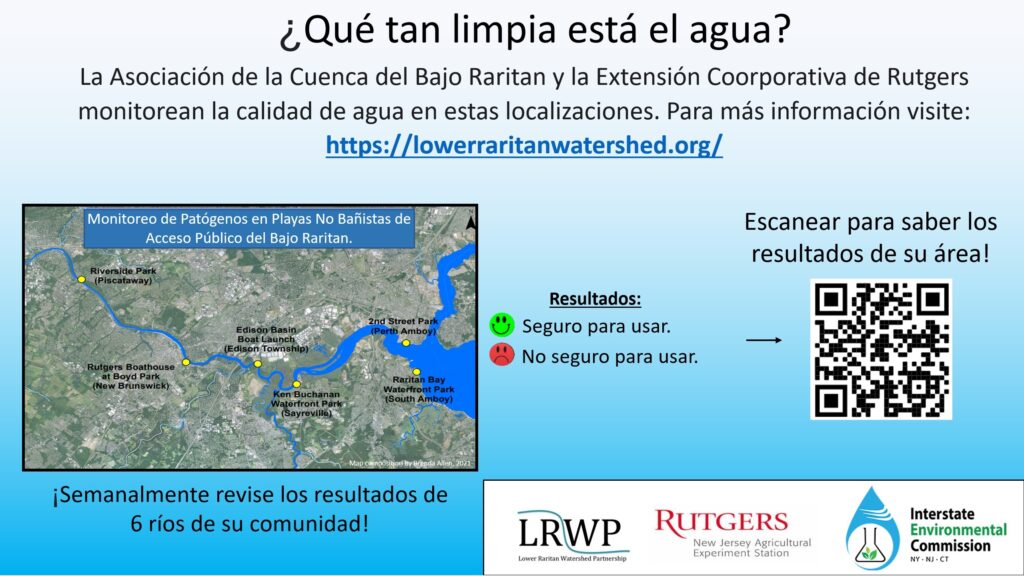
By LRWP Monitoring Outreach Coordinator Jocelyn Palomino
The Lower Raritan Watershed Partnership and Rutgers Cooperative Extension of Middlesex County run a volunteer pathogens monitoring program from May to September every Summer. On Thursdays we collect water quality samples at 6 non-bathing public access beach sites along the Raritan River, provide our samples to the Interstate Environmental Commission for analysis in their laboratory, and report the results to the public on Friday afternoons. Our goal in reporting these results is to give area residents an understanding of potential health risks related to primary contact (touching) the water during water based recreation.
Our lab results for water quality samples taken on September 29, 2022 show that Enterococcus bacteria levels do not exceed the EPA federal water quality standard of 104 cfu/100mL at any of our sites this week! Problem sites are normally indicated by red frowns on the map and chart, but the green smiles represent sites with bacteria levels below the federal standard for recreation including: Riverside Park (Piscataway), Rutgers Boathouse (New Brunswick), Edison Boat Ramp and Ken Buchanan Waterfront Park (Edison), South Amboy Waterfront Park (South Amboy), and 2nd Street Park (Perth Amboy).
Pathogens/Enterococci levels are used as indicators of the possible presence of disease-causing bacteria in recreational waters. Possible sources of bacteria include Combined Sewer Overflows (CSOs), improperly functioning wastewater treatment plants, stormwater runoff, leaking septic systems, animal carcasses, and runoff from manure storage areas. Such pathogens may pose health risks to people fishing and swimming in a water body. Please note: disease causing pathogens may be present in local waters even if lab results indicate levels below state or federal thresholds. If you choose to recreate on the Raritan, be safe and wash thoroughly after all activities.
Many thanks to the Rutgers Cooperative Extension of Middlesex County and Interstate Environmental Commission for their partnership, and to our team of volunteers who came out this week! See here for more information on our pathogens monitoring program.
Our team for this week geared up for the chilly morning we had on Thursday, Photo Credit: Andrew Gehman
While at the Rutgers Boat House, we encountered some folks who were fishing recreationally and caught some big ones as we did our sampling, Photo Credits: Frank Dahl
Volunteer Frank Dahl at the Edison Boat Basin completing a field observation datasheet to collect data on the environmental conditions and recreational activities at the time of sampling, Photo Credits: Jocelyn Palomino
Julisa Collado took charge of using our monitoring equipment this week at our sampling sites, Photo Credits: Jocelyn Palomino
At our South Amboy site, Jocelyn had to endure some strong waves to reach our weekly sampling point, Photo Credits: Julisa Collado